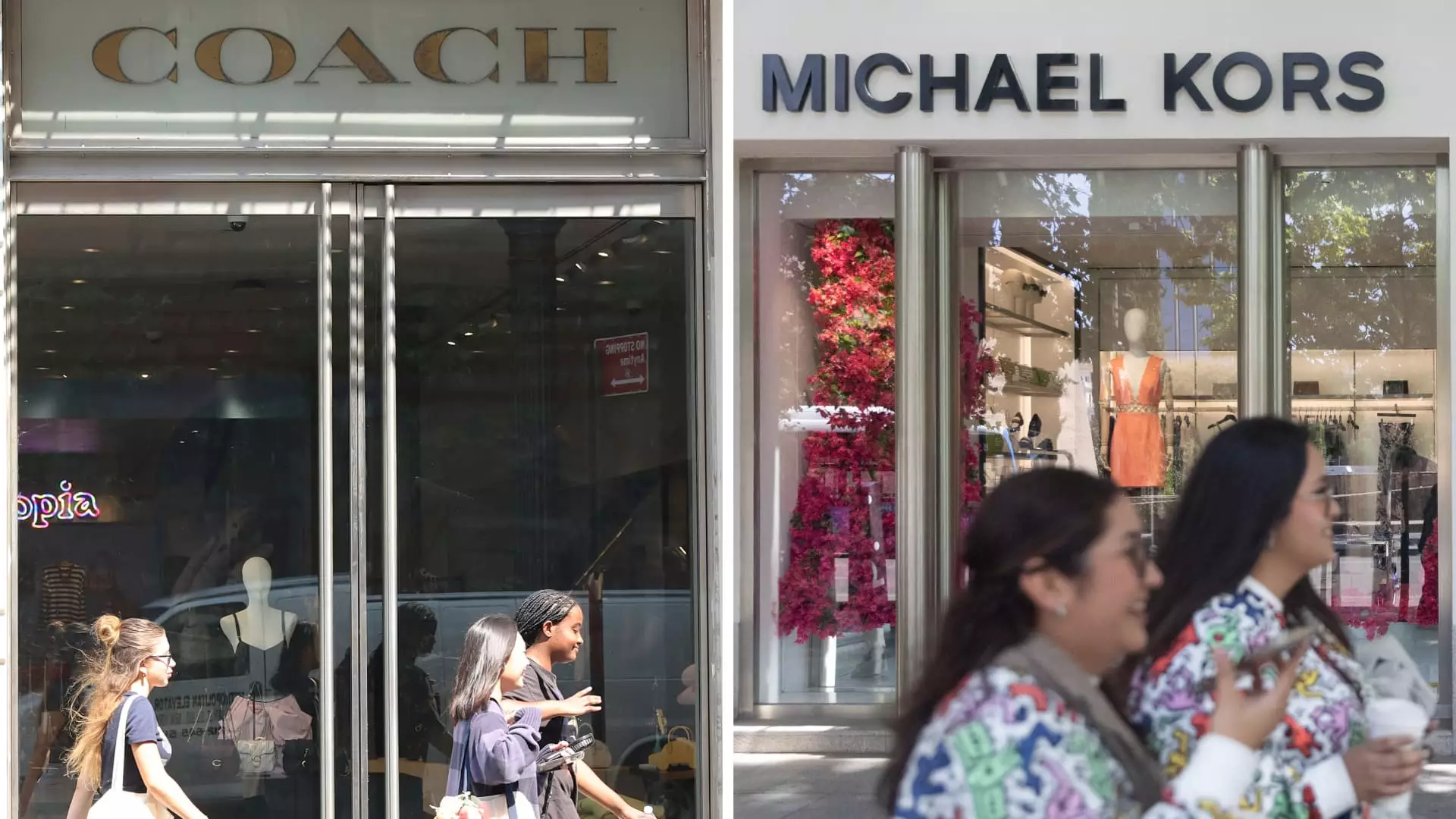In a significant ruling, a federal judge recently halted Tapestry, Inc.’s ambitious plan to acquire Capri Holdings Limited, a decision that has sent ripples through the luxury fashion landscape. Federal Trade Commission (FTC) Chair Lina Khan’s strategy of scrutinizing and blocking consolidations that threaten market competition was on full display. The Judge Jennifer Rochon’s preliminary injunction comes at a time when consumers are increasingly sensitive to pricing within their daily purchases, particularly in the luxury segment.
The Merger Proposal Background
The proposed $8.5 billion merger aimed to unify two of America’s largest luxury conglomerates, bringing renowned brands such as Coach, Kate Spade, and Stuart Weitzman under Tapestry’s umbrella alongside Capri’s illustrious Versace, Jimmy Choo, and Michael Kors. This marriage represented an industry shift anticipated to strengthen not just brand portfolios, but also consumer offerings across various product lines. However, the FTC’s intervention raises critical questions about market competition and consumer choice in a sector already described as dynamic and fragmented.
Instantaneously, the ruling had irrevocable effects on both companies’ stock performances. Tapestry’s stock enjoyed a significant bounce of approximately 10%, reflecting investor optimism about the company’s resilience and future prospects despite the setback. Conversely, Capri’s shares faced a sharp plunge of nearly 50%, signaling market anxiety about its sustainability without a merger that could bolster its operational strength in a highly competitive environment. The juxtaposition of these stock movements underlines how investor sentiments are often influenced by regulatory decisions rather than market fundamentals.
Tapestry’s leadership expressed disappointment in this ruling, committed to appealing, asserting that the companies operate within a fiercely competitive market landscape. They argued that the merger would not stifle competition but rather enhance it by allowing both companies to adapt more rapidly to consumer preferences. The strategic language employed by Tapestry underscores a common corporate narrative: that consolidation can lead to innovation and better consumer experiences, while simultaneously taking aim at regulatory bodies for impeding business endeavors.
Meanwhile, Capri’s position outlines a contractual obligation that will potentially cost Tapestry between $30 million and $50 million should they fail to secure the merger’s approval. On the flip side, Capri faces a hefty breakup fee of $240 million for backing out of the agreement. These financial stakes illuminate the serious business implications both companies have invested in this merger, and the lengths they are willing to go to avert substantial losses.
One of the FTC’s pivotal arguments against the merger was that it would lead to higher consumer prices for luxury handbags and apparel—a core concern in today’s economic environment, where inflation has significantly impacted consumer purchasing power. In response, Tapestry’s claim that the merger would enable more efficient production and a wider array of consumer offerings places the focus on consumer interests. FTC’s Bureau of Competition director Henry Liu emphasized the ruling as a vital victory for consumer access to quality goods at reasonable prices, reinforcing their stance against monopolistic tendencies.
This ruling plays into a broader narrative about the preservation of competition in key markets amidst rising inflation rates. The Biden administration, alongside various political factions, actively supports measures to safeguard market competitivity as a means to rein in costs for consumers, further lending gravity to this judicial decision.
The FTC’s vigilant approach, particularly under Chairman Lina Khan characterized by a broader commitment to blocking potentially monopolistic mergers across various sectors, sets a precedent that could alter the competitive landscapes in luxury fashion, grocery, and technology. Although Tapestry and Capri argue they do not directly compete, the evolving nature of consumer behavior—especially influenced by trends showcased on social platforms like TikTok—adds a layer of complexity to conventional competition assessments.
As we look to the future, both companies face an uphill battle: adapting strategies that account for regulatory landscapes while remaining agile in an ever-shifting fashion industry. A combination of preserving brand identity, engaging with contemporary consumer trends, and complying with heightened scrutiny could very well define their paths forward.
The denial of the Tapestry-Capri merger is not merely a legal setback; it reflects a pivotal moment in the luxury goods industry where regulation and consumer protection are at the forefront. Consumer agencies like the FTC are not just gatekeepers but active participants in shaping industry standards and practices. As the dust settles from this legal confrontation, both companies will need to evolve, ensuring that they remain competitive and relevant in an intricate and demanding marketplace, navigating the tensions between ambition and regulation.

